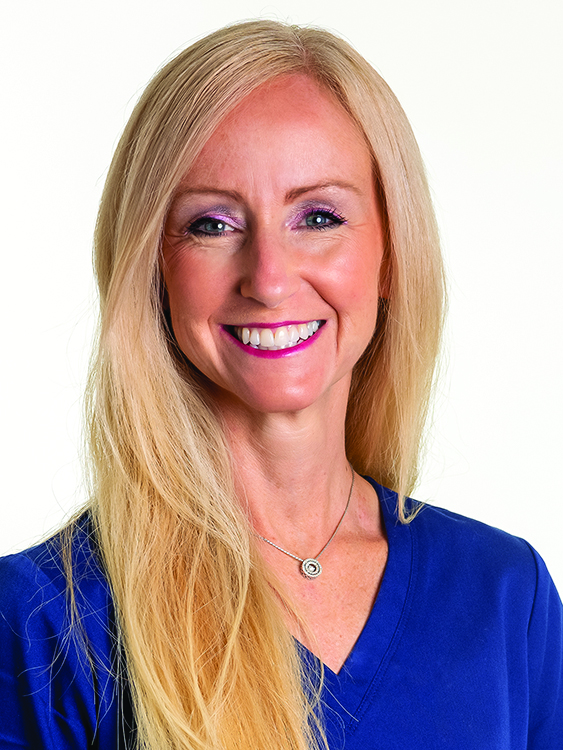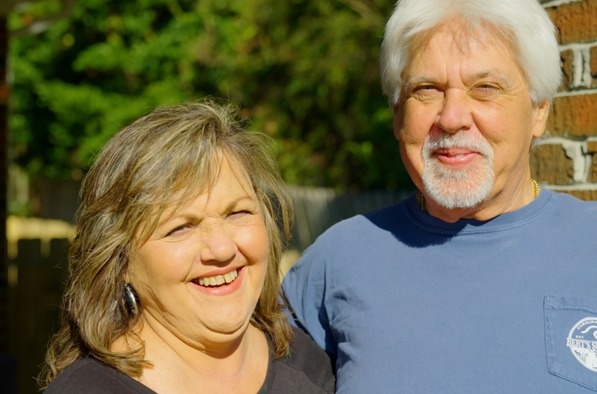It’s often said that there’s no place like home for comfort. And when it comes to healing, this is sometimes the case, too. Now a program allows qualified patients to receive expert care – the same quality and services they’d receive in a medical center – in a comfortable setting that supports healing and recovery: their own homes.
Novant Health New Hanover Regional Medical Center began enrolling patients in Hospital at Home, a program implemented at numerous health care organizations around the country, in March 2024. During the program’s first 16 months of operation, 285 patients opted to get care at home. The average age of a patient in the program is 78, though patients in their 20s have taken part. Hospital at Home may be less costly than traditional hospital care, and it’s beneficial for patients who are vulnerable to hospital-acquired infections and other complications.
Patients must meet clinical and social criteria established by Centers for Medicare & Medicaid Services (CMS) to be eligible for the program. There are 78 approved diagnoses – including pneumonia, COPD, urinary tract infections and more. Hospital at Home is only available to patients on Medicare or Medicaid, so there’s little to no cost to the patient. Medicare and Medicaid in North Carolina cover Hospital at Home, just as they do hospital stays.
Find a caring primary care physician who helps you achieve your best health.
How do patients go from being in the hospital to receiving care through Hospital at Home?
A Hospital at Home team works daily to identify patients in the hospital who could benefit from receiving care at home.
Each morning at 7:30, the clinical team huddles to review plans of care for each patient and identify those who would be a good fit for at-home care. Then a Hospital at Home physician works with eligible patients and the physicians caring for them to discuss the program as an option.
Some patients are reluctant to participate. But oftentimes this reluctance goes away as soon as Christy Spivey, senior director of nursing for community hospitals in Novant Health’s Coastal region, explains what the program entails. They’re not being discharged; they’re receiving hospital-level care at home.

"All the care they’re receiving in the hospital is exactly what they’ll get at home. We continue the antibiotics, therapy, breathing treatments, whatever they’re getting,” Spivey said.
Patients in the brick-and-mortar hospital with similar diagnoses to those who receive home care have nearly identical lengths of stay. The ideal home stay is three or four days, although some New Hanover patients needed as few as two days of home care. “The longest was 12 days,” Spivey said. “We use the same benchmarks to determine when a patient is ready for discharge from home as we do when they’re in the actual hospital.”
Currently, two or three patients are admitted to Hospital at Home every day. The program began in homes in New Hanover County and has now expanded into Brunswick and Pender counties.
High-tech and high-touch
Seven New Hanover Regional Medical Center physicians are dedicated to Novant Health’s program, and they provide care completely virtually. They have backgrounds in family and internal medicine, geriatrics and emergency medicine. There’s also a nurse on call 24/7 in the hospital command center.
Sleep, nutrition and mobility are three key tenets of the program. The clinical team works to ensure patients receiving care at home are getting good sleep and nutrition and can get around the house easily.
“When you’re in the hospital, you're often woken up at night for an assessment or to check vitals,” Spivey said.“But with the at-home program, if there’s no clinical reason for us to wake you up at night, we say goodnight and agree on what time we’re going to engage in the morning.”
How does a doctor at the hospital say “goodnight” to a patient who’s recovering at home?
Via video chat, naturally.
And what if patients don’t have a computer? No problem. They’re sent home with a loaner tablet so they can readily communicate with their care team. The tablet is a cinch to use – even for someone who’s not tech-savvy. “All they have to do is touch a big, green button on the screen to reach a nurse immediately,” Spivey said.
And that’s just the beginning.
“We send whatever devices a patient needs,” Spivey said. “They can monitor blood pressure, temperature, weight, pulse – we’ll even send a bedside commode if they need it. We teach patients how to check their vital signs. The readings are fed directly into the tablet, so it’s all super easy for the patient.”
The hospital has its own transportation service that takes patients from the hospital to their home. Once they’re back on familiar turf, a community paramedic is dispatched to the home to set up the patient’s virtual equipment. When the patient is discharged, a community paramedic gathers the medical equipment and tablet and returns them to the hospital.
Transforming your home into a virtual hospital
- Admission to Hospital at Home- During your hospital stay, your health care team works to ensure you are the perfect fit for the program. Your insurance covers your admission.
- Transport- You are transported home via Vitalink or through your personal vehicle with a family member.
- Set up- A community paramedic meets you in your home to set up your monitoring equipment, check your vital signs, administer medications and start a virtual visit with your care team.
- Daily care- You will receive twice daily in-person and virtual visits with your care team. You have access to on-demand care team virtual visits. You have access to meals, labs, diagnostics and therapy.
- Discharge- When your care team determines you are ready, you are discharged from the program. Continued monitoring programs are available.
Family support is key
To be considered for the program, patients must have support at home.
“Patient safety always comes first,” Spivey said. “We screen carefully. If someone lives independently and has no high-risk factors, we could admit them to home if there’s a neighbor or friend to check on them.”
Listening to the patient’s family and friends is crucial. They’re included in the plan of care. “If they notice a change in the patient or have questions, our team is trained to delve deeper,” Spivey said. “If we’re really concerned, we call a paramedic and ask them to check on the patient.”
Patients who receive care at home must first be admitted to the brick-and-mortar hospital. In fact, patients who participate in Hospital at Home are still classified as “inpatients.”
Meals are delivered
When you’re in the hospital, three meals a day are delivered to your room. And they’re all tailored to your dietary needs.
The team ensures at-home patients have access to healthy meals the same way: by delivering them. Getting hospital-level care at home means patients are provided customized meals – three meals a day and for up to three days – from the hospital’s kitchen.
“And these are medical meals,” Spivey said. “If the physician orders a cardiac diet, a low-sodium diet, whatever that diet is, the meals will be compliant with the physician’s orders.”
The paramedic will even go into a patient’s pantry to review its contents and discuss with the patient or a family member which foods are best for them.
Novant Health’s program is different from most because, Spivey said, “Our meals come from our kitchen run by our own food and nutrition team. A courier picks those up and takes them to the home. They’re easy to prepare. You just pop them in the microwave.”
Being able to move freely around the house is as important as proper nutrition. And community paramedics – an invaluable part of this program – are trained on home safety. They’ll do a safety assessment of a patient’s home to ensure nothing impedes their mobility. They look for trip hazards, like throw rugs, that can be eliminated.
“In the hospital, a patient who’s a fall risk isn’t usually encouraged to get up as much as they really should,” Spivey said. “At-home patients are encouraged to get up and move around the house. We do all we can to promote mobility, including providing physical therapists who are specially trained to provide services in the home for those who qualify.”
Patients who’ve participated are grateful for the comforts – and convenience – of being at home. Novant Health’s patient satisfaction scores are impressive. “Of the surveys we’ve received, we've gotten 96% positive scores,” Spivey said. “Patients really appreciate being able to recuperate at home.”
If you’re admitted to the hospital, ask your doctor about the criteria for Hospital at Home.

Healing at home
In October 2024, Gina Aldinger experienced severe shortness of breath, and a pulse oximeter revealed her blood oxygen level was dangerously low.
EMTs administered oxygen and rushed her to Novant Health New Hanover Regional Medical Center in Wilmington where she received a diagnosis of chronic obstructive pulmonary disease – COPD.
Aldinger spent two nights being cared for in the hospital.
“The staff was wonderful,” Aldinger said. “I didn’t feel all that sick, even though I was on oxygen the whole time.”
On the third day, Aldinger’s care team sent her home with an oxygen tank. But she wasn’t discharged. Through the Hospital at Home program, she was still considered an inpatient. Seven New Hanover Regional Medical Center physicians provided care completely virtually, and a nurse was on call 24/7.
Aldinger was skeptical at first: “When they told me I could go home, I thought it was too soon, but they assured me that somebody would be at my beck and call if I had an issue. I knew it would be easier on my family if I were home. My insurance would’ve allowed me to stay another night, but if I could get hospital-level care at home, that sounded like the best of both worlds.”
Click here to read the rest of Gina's story and meet her respiratory therapist.













